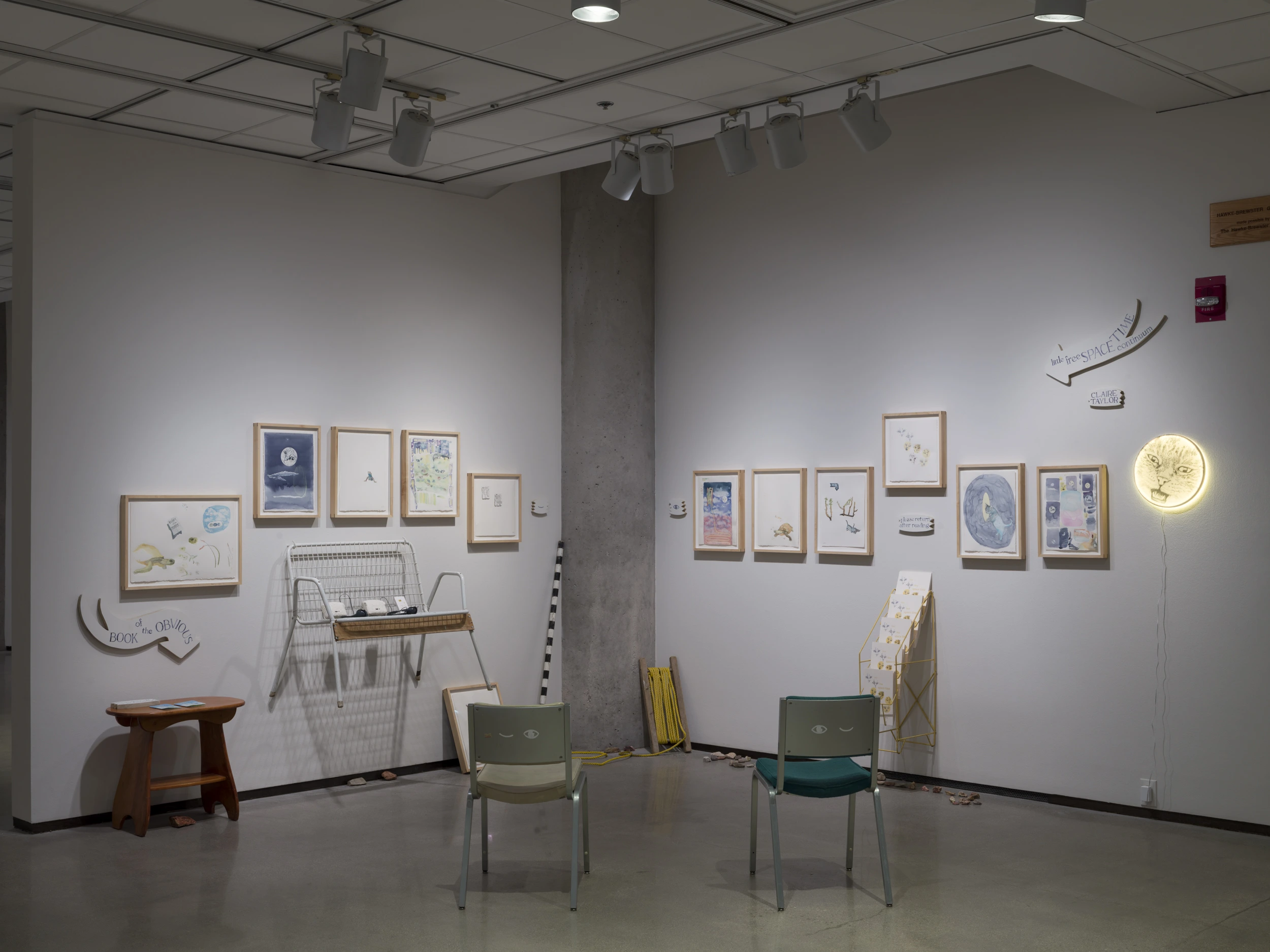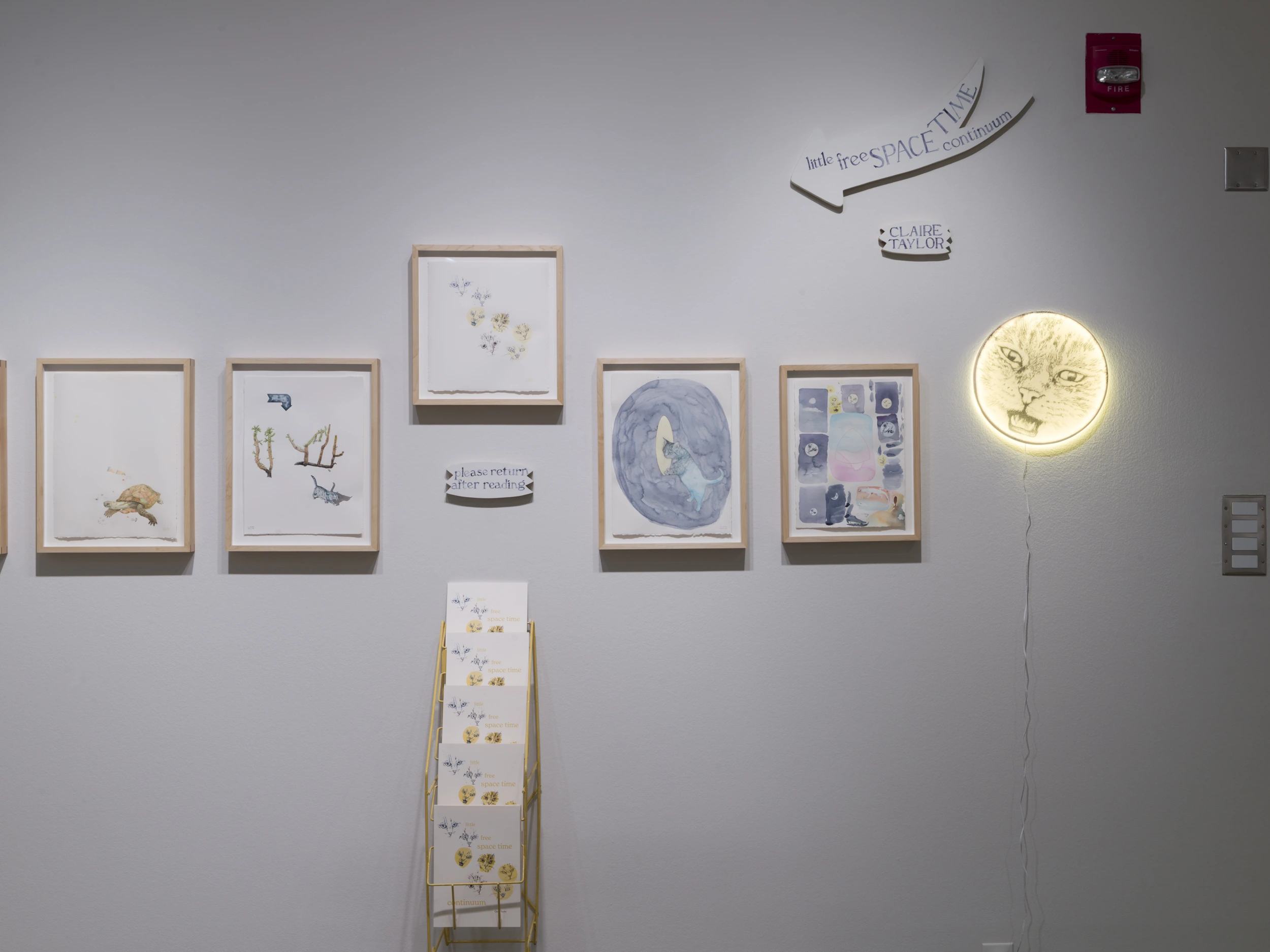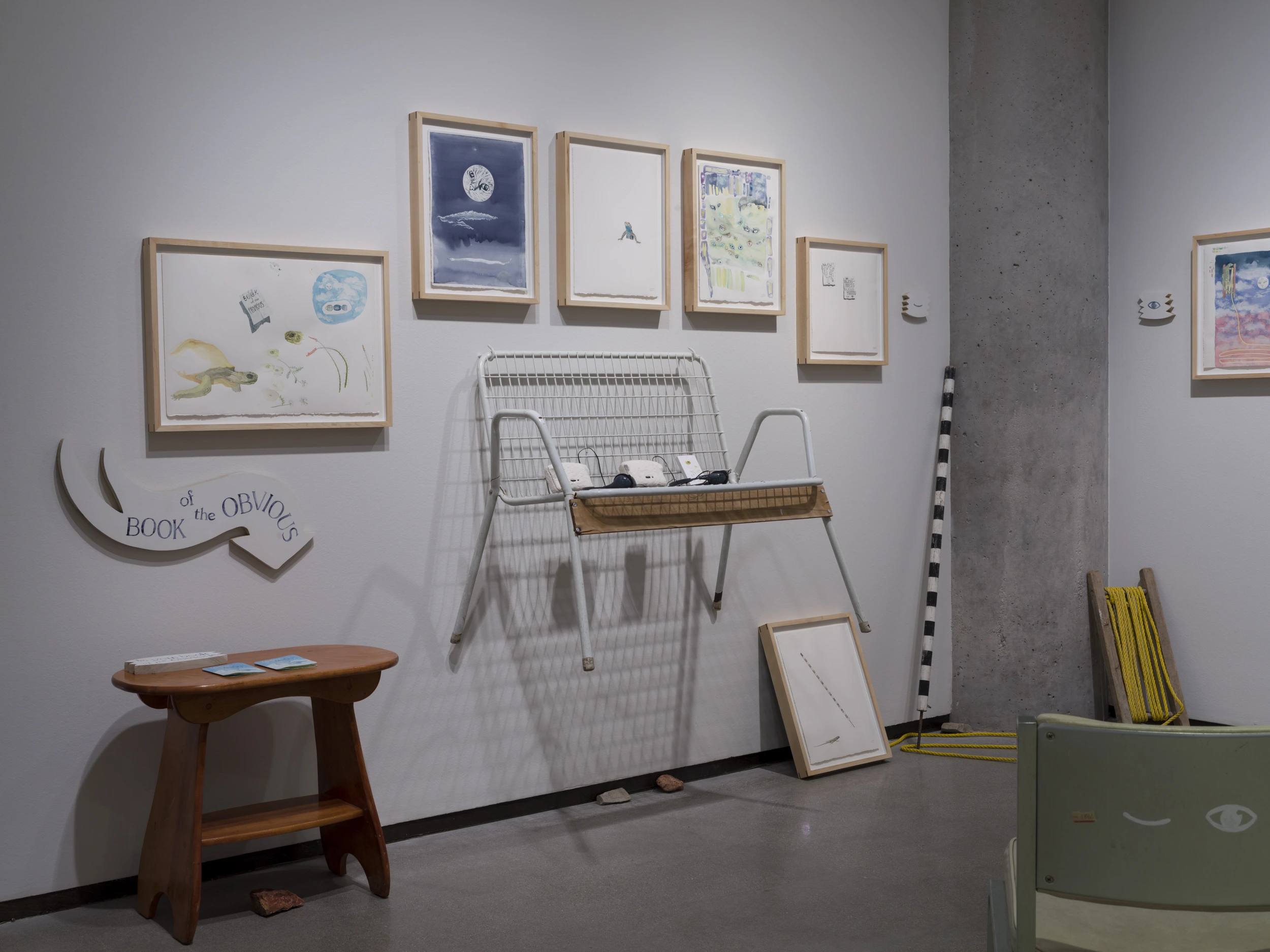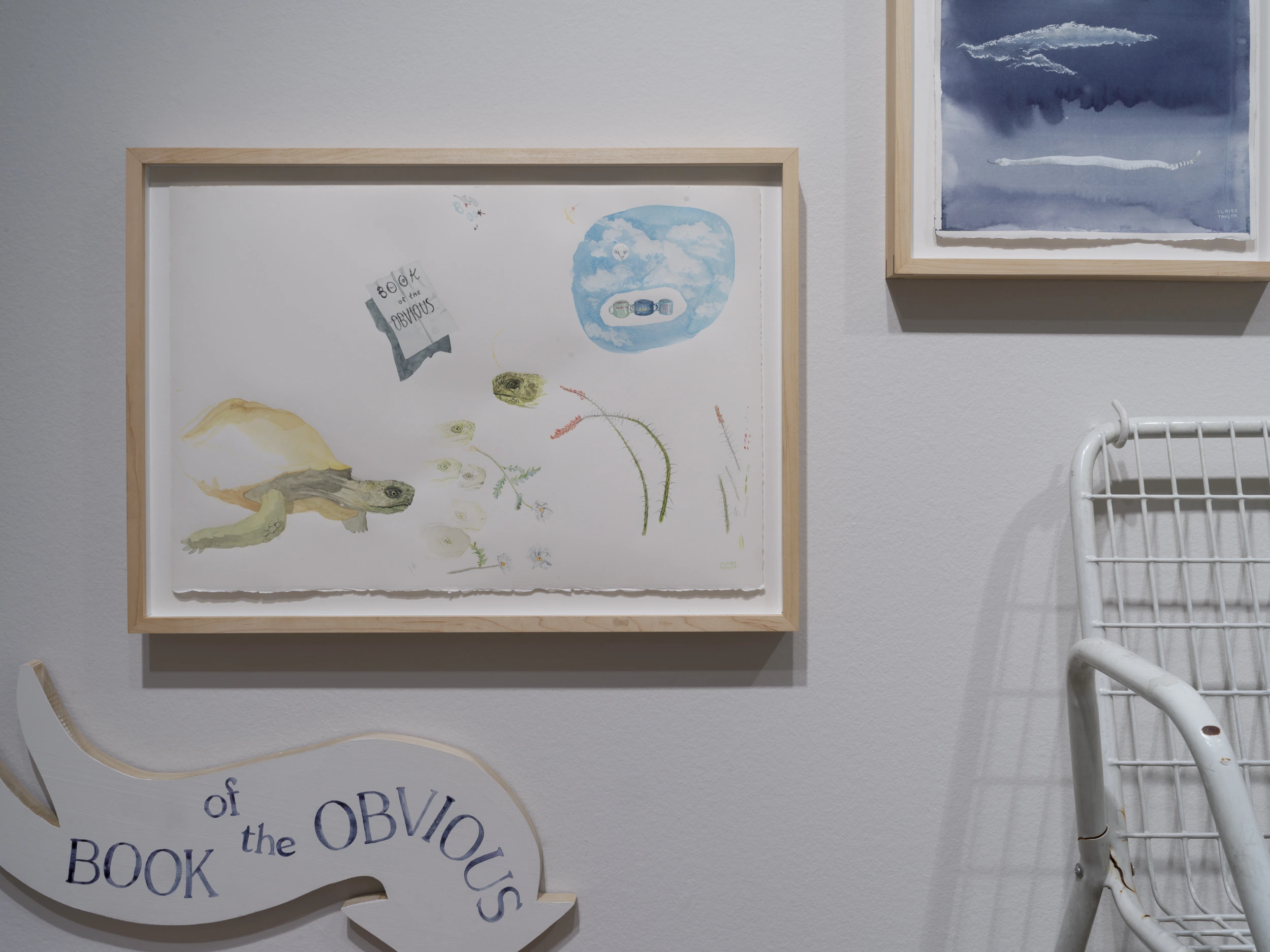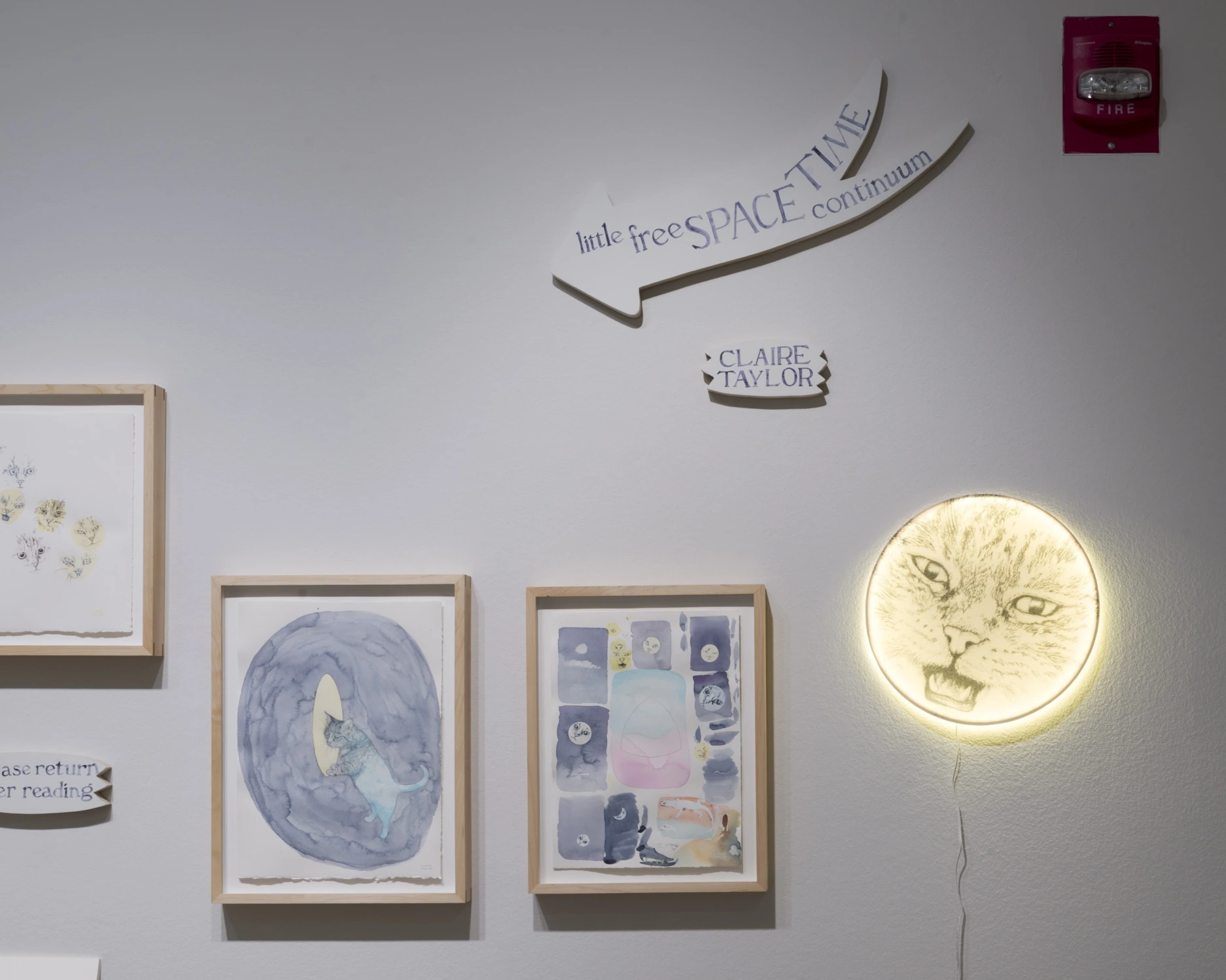Art, Science, and the Self: A Q&A with 2025 MFA Graduate and University Fellow Claire Taylor

Part of Claire Taylor's exhibit "Little Free Space Time Continuum"
Alexis Joy Hagestad
Claire Taylor’s Master of Fine Arts (MFA) journey at the University of Arizona exemplifies how graduate studies can foster interdisciplinary exploration, creative risk-taking, and meaningful collaboration. As an MFA student in the School of Art and a University Fellow, Claire has spent the past three years exploring how creative practice can intersect with environmental science, personal narrative, and community engagement. Her installation, Little Free Space Time Continuum, currently on display at the Center for Creative Photography, draws on trail runs, desert creatures, and her own reflections on identity to create a body of work that’s both whimsical and deeply introspective.
In the conversation below, Claire discusses her path to the MFA, the value of interdisciplinary collaboration, and how graduate school gave her the space—and support—to take artistic risks and grow.
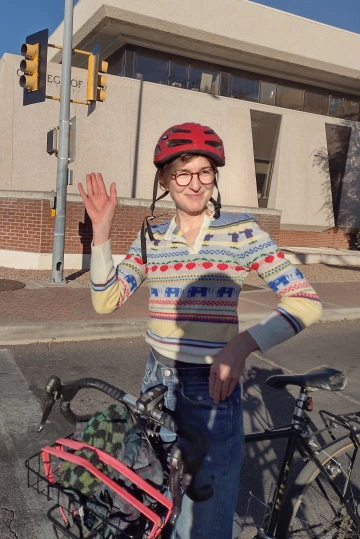
Claire Taylor
Can you introduce yourself and share what brought you to the MFA program at the University of Arizona?
I love to trail run and play frisbee and ride my bike. I moved here from Salt Lake City, Utah, where all of those things are very much in the culture. Prior to coming to the MFA program, I worked at the Salt Lake City Arts Council, and prior to that I was working freelance collaborating with environmental writers and doing art commissions.
I’ve long wanted to do an MFA. I previously did graduate school—a Master of Science in Environmental Humanities—at the University of Utah. But having extended time being supported in making art always appealed to me. I was interested in the U of A’s MFA program because it was advertised as supporting collaborations with the environmental sciences. I was interested in illustration and working more directly with environmental scientists.
You are a University Fellow. How has that experience shaped your time in graduate school creatively, academically, or personally?
The University Fellows Program encouraged me to think collaboratively and to seek out funding to do the things I wanted to do. I applied for a Garden Club of America scholarship while in the UF program. It was mainly billed as a science-based scholarship. However, I proposed creating artwork about the plants of the Tucson area, and [I] received the scholarship!
The UF program allowed me to have more time because I didn’t need to teach my first year, which gave me more freedom to experiment in my first year as well as time to reach out to scientists to collaborate with. I don’t think I would have had the capacity to do as much outreach as I did without the support of the UF program. I made a few good connections, especially with a scientist in the School of Natural Resources and the Environment, Dr. Elise Gornish, and a scientist in Biosphere 2, Aaron Bugaj. Two collaborative art-science projects came out of this outreach. One was supported by the Arizona Institute for Resilience 2023 Resilience Theme Grant. For that, I made an illustrated field guide about soil health in southwest Arizona titled Notes on Soil.
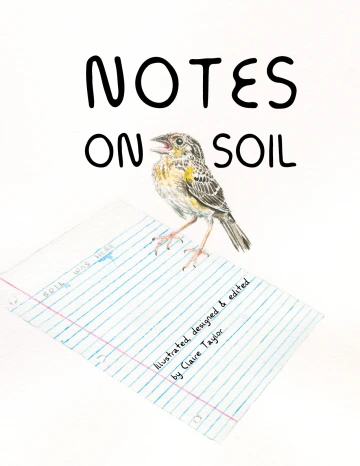
A page from "Notes on Soil"
I also really loved getting to know people from other colleges in the UF program! I made some lovely friends there.
What other programs and activities that you’ve been a part of during your time at the University of Arizona stand out to you as having been influential?
There are so many influential experiences I've had it'd be too much to list them all. So, I'll mention a couple. I was lucky to participate in the Field Studies in Writing & Art fellowship and artist residency. We stayed up in Patagonia for a couple weeks where we worked with Borderlands Environmental Care Youth. I led them in a couple art programs and got to join them in their volunteer work in the field, and spent the rest of the time exploring the surrounding landscapes and working on my art.
I’d also say that the Carson’s Scholars Program was very influential in that it helped me see myself in a cohort of folks interested in environmental issues coming from all different colleges--the sciences, humanities and arts.
I'd also say that my collaborations with environmental scientists have been very influential. I've gotten to visit so many interesting places and learn cool things in the process. One such collaboration took me to Alamos, Sonora, Mexico, where I visited an agave farm. Another collaboration took me to the grasslands surrounding Tucson and Patagonia. I've felt very lucky and supported here at the U of A.
Your work is currently on display at the Center for Creative Photography. What is this body of work about, and what inspired it?
It’s titled Little Free Space Time Continuum. It’s an installation containing what I’m calling a self-help book. The book is about accepting all parts of yourself. It’s written through metaphors and characters of the Sonoran Desert. I took inspiration from the introspective thoughts I’d get while on trail runs in Tucson. The book sits with a lot of ambiguity. But that’s because life is ambiguous and filled with uncertainty. My intention with the book is for the reader to walk away with a feeling of wonder and joy in being alive.
The main characters are based off my cat, Juniper, lizards I’ve met in the area, and tortoises I’ve met here in Tucson. Through my time working with environmental scientists I met Robert Villa, the current president of the Tucson Herpetology Society. He let me photograph his pet Sonoran Desert tortoise, Cecil, which I referenced when painting the tortoise in my story.

Part of "Little Free Space Time Continuum"
Alexis Joy Hagestad
How would you describe your artistic style or the themes you explore through your art?
I work mainly in watercolor, creative writing and what is called artist books (which is an artist’s interpretation on the book form). I tend to create work about the landscapes I go running in and the creatures I meet on these runs. I’m usually in a more meditative state while running and I like to capture those feelings in my art. I incorporate themes to do with my thoughts on existence. That’s partly because I grew up in an oppressive religion that set strict guidelines on my existence as a woman. So, I use art as a form of therapy and expression of freedom in my existence. I depict wildlife and plants as metaphors for concepts I’m exploring. Also, I like to incorporate feelings of whimsy and humor as those are very important aspects of existence.
During the MFA program my art has shifted a bit. I’ve incorporated more fantasy. I’ve also featured my cats! I used to just paint cats as a guilty pleasure and as pet portraits for others. But I love painting cats. So, I allowed myself to do work about cats while in the MFA program. And it’s been fun, funny and liberating!
What’s next for you after graduation, and how do you see your work evolving in the future?
I’m still figuring out what’s next! I’ve been so busy my last year working on my thesis exhibition as well as collaborations with environmental scientists I haven’t had time to apply for jobs. I may adjunct teach in the meantime. I’m currently in the middle of an art and science collaboration to do with agave working with scientists in the USA and Mexico.
In early June I'll be attending the College Book Art Association's (CBAA) conference in Madison, Wisconsin, to give a presentation and participate in a panel discussion titled Artist’s Books & Ecology. In addition, an artist book I made while in the MFA program, Wandering Moonbeam, was juried into CBAA's book art exhibition at the conference.
I also plan to pursue freelance again, but more purposefully, and probably do some more pet portraits. I hope to do more work with environmental scientists and, perhaps, get some training in scientific illustration.
If you’d like to get in touch, my website www.clairetaylor.art, my Instagram is @clairetaylor.art and my email is hi@clairetaylor.art.
Claire Taylor’s graduate experience demonstrates the power of cross-disciplinary collaboration and self-directed inquiry, cornerstones of the University of Arizona’s graduate community. Through her work with scientists, environmental organizations, and fellow creatives, she has shown how research and artistry can work hand-in-hand to spark curiosity and connection. As she moves forward into post-graduate life, Claire remains committed to a practice rooted in exploration—of ecosystems, of ideas, and of herself.
Claire Taylor’s Little Free Space Time Continuum will be on exhibit in the Center for Creative Photography until May 16, 2025.


